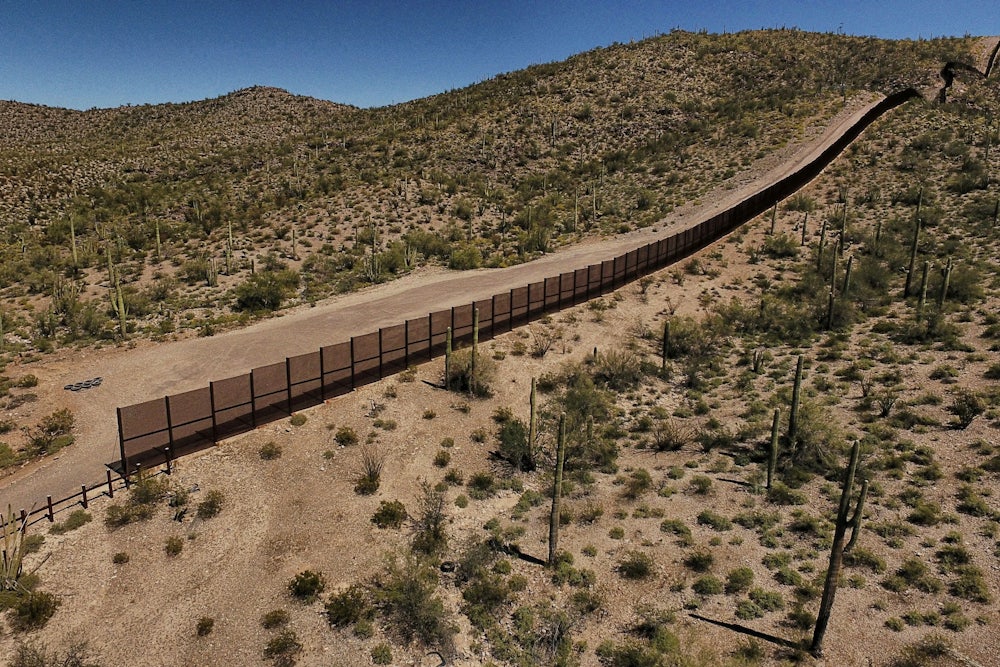A three-mile section of border fencing in California will be constructed without federal protections for clean water and air, endangered species, and historic sites, according to a notice posted Tuesday in the Federal Register. Elaine Duke, the acting secretary of the Department of Homeland Security, said in the notice that the “El Centro Sector,” which covers the eastern half of California’s border with Mexico, is “an area of high illegal entry for which there is an immediate need to construct border barriers and roads.”
The area is also home to wildlife habitat—including some threatened and endangered species—as well as farmland, desert vegetation, wetlands, archaeological resources, and prehistoric sites, according to a U.S. Customs and Border Protection environmental assessment of the area in 2012. But none of that will get in the way of Trump’s wall. Here are all the laws that have been waived, per Tuesday’s notice.
- The National Environmental Policy Act
- The Endangered Species Act
- The Clean Water Act
- The National Historic Preservation Act
- The Migratory Bird Treaty Act
- The Migratory Bird Conservation Act
- The Clean Air Act
- The Archeological Resources Protection Act
- The Paleontological Resources Preservation Act
- The Federal Cave Resources Protection Act of 1988
- The Safe Drinking Water Act
- The Noise Control Act
- The Solid Waste Disposal Act
- The Resource Conservation and Recovery Act
- The Comprehensive Environmental Response, Compensation, and Liability Act
- The Archaeological and Historic Preservation Act
- The Antiquities Act
- The Historic Sites, Buildings, and Antiquities Act
- The Farmland Protection Policy Act
- The Federal Land Policy and Management Act
- Section 10 of the Reclamation Project Act of 1939
- The National Fish and Wildlife Act of 1956
- The Fish and Wildlife Coordination Act
- The Administrative Procedure Act
- The Rivers and Harbors Act of 1899
- The Eagle Protection Act
- The Native American Graves Protection and Repatriation Act
- The American Indian Religious Freedom Act
- The Religious Freedom Restoration Act
With these waivers, this section of fencing can be built on top of archeological sites, historic and cultural sites, endangered species habitat, and drinking water sources. Construction vehicles and equipment can emit as much as they want into the air and make as much noise as they want. If construction happens to threaten Native American religious sites, that won’t be a problem, either.
This is the second time DHS has waived environmental rules to build sections of Trump’s great big wall, after doing so in August for replacement fencing south of San Diego. The practice is not unprecedented; George W. Bush’s administration used environmental waivers to build border fences five times, according to NPR. Still, green groups are seeking recourse via the courts. Last week, the Center for Biological Diversity filed a lawsuit arguing that the waiver practice violates the Constitution’s take care clause and separation of powers doctrine.
